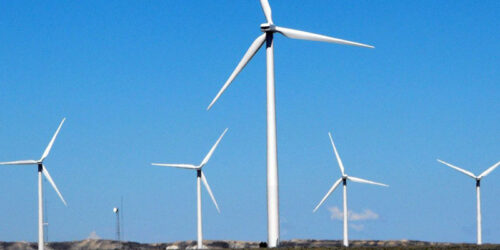Along with a solar farm and a battery, five giant wind turbines are powering much of the operations at the Agnew gold project, about 1,000 kilometres north-east of Perth.
It is the first resources project anywhere in Australia to have a wind farm, but it is unlikely to be the last.
What’s more, the mix of renewable energy sources to increasingly meet the needs of mines such as Agnew is set to be replicated across the country.
“It’s been great,” says Stuart Mathews, the executive vice president of Gold Fields, the South African company which owns the Agnew project.
At Agnew and other resources sites around Australia, companies are turning to renewable energy in increasing numbers as they look to cut their costs and carbon emissions.Giants, including Rio Tinto, BHP and Woodside, have unveiled plans to spend billions of dollars on wind turbines and solar panels as they seek to go green.
Mr Mathews said the company had a goal to become the world’s “leading” sustainable gold miner and, at a practical level, the switch towards renewable sources of power was commercially sensible. He said most of the firm’s operations in Australia were remote and unconnected to electricity grids, meaning they had to be self-sufficient in their power generation.
Until recently, these needs tended to be met by burning millions of litres of diesel fuel and big amounts of gas every day to keep the operations going.
Switching to renewable energy, Mr Mathews said, enabled projects such as Agnew to significantly reduce their reliance on fossil fuels.
Crucially, he said renewable sources of power were not linked to volatile prices for diesel and gas, making it easier to budget for energy costs.
As Australia pivots towards carbon neutrality by 2050, resources companies are eyeing energy as an area where relatively easy gains can be made, according to industry observers. Engineering firm EDL, which built the Agnew power system, estimates there is about 2 gigawatts of “off-grid” power demand in Australia.
The Brisbane-based company said it would cost about $2.5 billion to meet half of that demand with renewable energy. In Western Australia alone, almost half of all electricity generated in the state is used outside of power grids by resources companies operating in remote areas.
EDL chief executive James Harman said practically no-one looking at new power supplies in remote places was considering fossil fuel-only options. “The whole world is transitioning from fossil fuels and the remote energy space is no different,” Mr Harman said.
At Agnew and other resources sites around Australia, companies are turning to renewable energy in increasing numbers as they look to cut their costs and carbon emissions.Giants, including Rio Tinto, BHP and Woodside, have unveiled plans to spend billions of dollars on wind turbines and solar panels as they seek to go green.
Mr Mathews said the company had a goal to become the world’s “leading” sustainable gold miner and, at a practical level, the switch towards renewable sources of power was commercially sensible. He said most of the firm’s operations in Australia were remote and unconnected to electricity grids, meaning they had to be self-sufficient in their power generation.
Until recently, these needs tended to be met by burning millions of litres of diesel fuel and big amounts of gas every day to keep the operations going.
Switching to renewable energy, Mr Mathews said, enabled projects such as Agnew to significantly reduce their reliance on fossil fuels.
Crucially, he said renewable sources of power were not linked to volatile prices for diesel and gas, making it easier to budget for energy costs.
Mr Harman said the harsh environmental conditions that tended to make mining in remote areas so challenging were often ideal for renewable energy generation.
He said this meant renewable sources would only become more attractive as technology costs came down in the future. “It (Gold Fields) could’ve cut a wire to another supply, but it worked out that with the conditions around here — as you can see it’s very wind, very sunny — they’re great conditions for renewables,” he said.
“And Gold Fields took a punt and decided they would back us to develop this micro-grid to continue to supply them in the way they need to be supplied … reliably and sustainably.” Fossil fuels for ‘some time yet’
Despite the bullish outlook, Mr Harman cautioned that fossil fuels — particularly gas — would still be needed at many remote resources projects for some time yet.
He noted that most mines ran around the clock, meaning they required uninterrupted power supplies. And while renewable energy was capable of meeting many of those needs, he said fossil fuels would be needed to fill in the gaps until green technology caught up.







